What is Occupy? Collective insights from a ‘Whole Systems’ Session with Occupy followers
This article is about a ‘whole systems thinking’ session Arkadian ran with 15 Occupy followers of all ages and backgrounds. All participants were required to answer 3 questions: –
(1) What is Occupy’s purpose; (2) How should this purpose be achieved and; (3) Why was it important?
Personal thoughts were written on post-its, stuck on a wall, and organised by the group according to content similarity and difference. The discussion fueled by these activities gave rise to 6 collective insights (the 7th is an insight Arkadian derived from the others): –
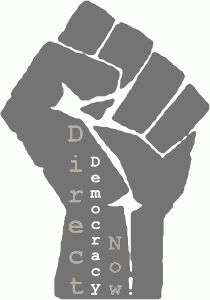 (1) Occupy is a grass-roots, direct-democratic movement
(1) Occupy is a grass-roots, direct-democratic movement
(2) Occupy is ‘about’ co-creating and enacting a Viable Alternative to the current system
(3) The Viable Alternative is a collective vision
(4) Achieving the Viable Alternative requires building critical mass
(5) Building critical mass depends on making the Viable Alternative simple, relevant and clear to the wider population
(6) Aims could be best achieved through grass-roots ‘campaigns’ connecting the Viable Alternative to local community issues
(7) These insights had implications for Occupy’s organisational design
There follows a brief explanation of each: –
1. Occupy is a grass-roots, direct-democratic movement: All followers saw Occupy as ‘of the people / for the people’, independent of, and transcending all, other organisations. There was genuine concern that ‘partnerships’, or Occupy chapters becoming formal or political entities, would compromise the essential qualities of this idea. Nevertheless, it was also acknowledged that high profile support could, and had, delivered some powerful PR.
The solution proposed was that ‘partnerships’ should always be one-way and arms-length only, i.e. limited to inviting, or allowing, third parties to sign up to Occupy’s (viz: ‘the people’s’) aims and principles. But what aims and principles?
2. Occupy is ‘about’ co-creating and enacting a Viable Alternative to the current system: The most powerful theme that emerged in the discussion. To get a handle on some of the structural principles of this Viable Alternative, ask yourself the following questions… 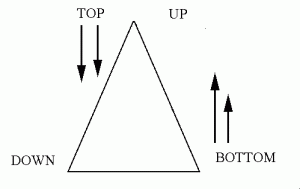
Power: Would the world be better if people had greater involvement in decisions that affect their lives and future?
 Equality: Would the world be better if the gap between rich and poor were reduced? (N.B. Not to a ‘ Communist’ extreme, merely a lessening of the vast multipliers separating high / low incomes and developing / developed nations, and their toxic impact on society and environment).
Equality: Would the world be better if the gap between rich and poor were reduced? (N.B. Not to a ‘ Communist’ extreme, merely a lessening of the vast multipliers separating high / low incomes and developing / developed nations, and their toxic impact on society and environment). 
Values: Would the world be better if quality of life and well being were valued over material and status-driven self-interest?
Worldview: Are the big social, environmental and economic challenges connected in any way? Might addressing one have beneficial effects on others? 
Thinking: Should the well being of future generations and the long-term viability of life on our planet be important to current decision-making?
If you answered ‘Yes’ to any, or all, of these questions then you’re ‘Occupy’. Below is a rough summary table comparing the principles of the Viable Alternative to those of the current system.
So what actions does all this imply? Firstly, if they are widely shared, then these structural principles could provide the ideal framework for coherent organisation, action and communications, and solidarity, across diverse contexts.
Secondly, the Viable Alternative is a positive idea: it’s about a happier, better future. Whilst its necessary to highlight why change is necessary, negative news and arguments about the nitty-gritty can drive people away. Emphasising these higher-level, common and cheerful principles, on the other hand, could score greater successes with the wider population.
3. The Viable Alternative is a collective vision: The whole group shared a belief in the urgent necessity for the Viable Alternative, which in turn, seemed dependent upon an understanding of the scale and interconnectedness of the issues.
However, each individual held their own beliefs about what the important problems were, how they were connected, and the appropriate remedies and actions: a product of their life experiences, personal interests and, for many, exposure to new information since engaging with the movement.
Nevertheless, the post-its-on-the-wall represented a truly epic mess, one that evidently required highly situation-specific solutions, each of which defied the analytic or predictive capabilities of any ‘expert’. Recognition of this within the group seemed to drive processes where individual experiences were tools for building, negotiating and informing a dynamic picture of NOW, in order to decide the best next step(s) only, not the grand master plan.
 Rather than disagreements about which view was ‘right’ or ‘wrong’, all views seemed appreciated as valuable and partially right. In a sense, the group behaved like a ‘super-brain’, leveraging many lifetimes’ worth of perspectives, knowledge and experience to reach wise ‘objective’ assessments and decisions about an impossibly complex ‘subjective’ situation.
Rather than disagreements about which view was ‘right’ or ‘wrong’, all views seemed appreciated as valuable and partially right. In a sense, the group behaved like a ‘super-brain’, leveraging many lifetimes’ worth of perspectives, knowledge and experience to reach wise ‘objective’ assessments and decisions about an impossibly complex ‘subjective’ situation.
So what are the implications of all this? Firstly, if collaborative decision-making can be so individually empowering and collectively clever, then all Occupy followers should be furnished with simple group moderation skills and ‘whole systems’ tools. Processes that focus discussions on external representations (pictures / post-its / models etc.) should become a sine qua non of the movement.
Secondly, the movement should stress that, whilst expressing a personal view is the inalienable right of any follower, unless its braided into a collective decision, it ain’t Occupy!
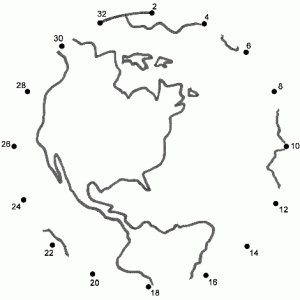 Lastly, if action is motivated by seeing the connections between disparate social, economic and environmental issues, then Occupy should underscore ‘stories’ that highlight the ‘connections’, and fast track new members into contributing to collective decision-making – judging by the discussion, it’s difficult not to ‘join-the-dots’ when exposed to the Occupy ecology.
Lastly, if action is motivated by seeing the connections between disparate social, economic and environmental issues, then Occupy should underscore ‘stories’ that highlight the ‘connections’, and fast track new members into contributing to collective decision-making – judging by the discussion, it’s difficult not to ‘join-the-dots’ when exposed to the Occupy ecology.
(4) Achieving the Viable Alternative requires building critical mass: Reflection upon this fact led rapidly to the recognition that human and financial resources were critical priorities, and that there were probably no shortcuts to them.
(5) Building critical mass depends on making the Viable Alternative simple, relevant and clear to the wider population: The second dominant theme of the session. To successfully engage the wider population, it was deemed Occupy needed communications that were simple, relevant to the differing needs of specific target audiences, and employed clear popularly-understood terminology pitched at the appropriate level of understanding, e.g. stock phrases like ‘socioeconomic justice’ and ‘ecological limits’ were not understood by many in the group. It was also considered important that these messages were backed-up by incontestable evidence and sources, and communicated solidarity.
Everyone also acknowledged this would entail outwitting the ‘guardians’ of the current system ‘at their own game’, exploring channels that they don’t, or can’t easily, command, and responding quickly and devastatingly to opposition. The discussion highlighted that intelligent, reflective information management – researching, screening, organising, tailoring – was central to Occupy’s role and ultimate success.
So, to recap. Occupy needs to…
(i) Organise without being an organisation.
(ii) Communicate a Viable Alternative when no-one can know what it is, and where it is only made manifest via specific situations and perspectives.
(iii) Create an outward appearance of solidarity when structured disagreement is an essential requirement.
(iv) Use channels not covered by the ubiquitous guardians of the current system, whilst building volunteers, funds and critical mass.
What solution to these challenges did the collective propose?
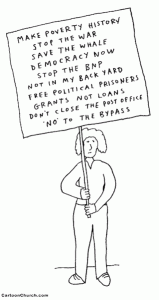 (6) Grass-roots ‘campaigns’ connecting the Viable Alternative to local community issues: Explore and discuss ‘issues’ door-to-door. Those that resonate, have local relevance, and are aligned with the Viable Alternative could then become the focus of grass-roots campaigns, building to direct ‘visible’ action, and all informed by Occupy’s structural principles, particularly, inclusive community decision-making. Not talking and blaming, but showing the world how things could be: through small-scale collaborative achievement and learning.
(6) Grass-roots ‘campaigns’ connecting the Viable Alternative to local community issues: Explore and discuss ‘issues’ door-to-door. Those that resonate, have local relevance, and are aligned with the Viable Alternative could then become the focus of grass-roots campaigns, building to direct ‘visible’ action, and all informed by Occupy’s structural principles, particularly, inclusive community decision-making. Not talking and blaming, but showing the world how things could be: through small-scale collaborative achievement and learning.
(7) These previous 6 insights had implications for Occupy’s organisational design: The final insight, Arkadian’s own, was that attaining all of the previous objectives implied a radically new organisational design, lest rapid growth give rise to hierarchy – the spoiling of many a revolution and NGO, and, in Occupy’s case: a fundamental hypocrisy.
A model where multiple ‘cross-pollinating’ cells are structured around local campaigns / action and mutually agreed principles of the Viable Alternative, perhaps? For a future session…
So, to conclude, at Occupy’s heart is a Viable Alternative that really is the current system turned on its head. A total paradigm shift, but a necessary one, if we are to share a remotely tolerable future.
Moreover, maybe change is easier than it seems. After all , the principles of the Viable Alternative are neither unfamiliar nor new, are they? Arguably, they, and not those of the current system, have determined how we cooperate with our nearest and dearest since time immemorial. We just need to realise the whole world could and should work this way.
1 Comment
Leave a comment
Recent Posts
- Seeding a Viable Economic Alternative. Pt 3: Placing Mother Nature First
- Seeding a Viable Economic Alternative. Pt 4: Ego-as-Process
- Charlie Hebdo and the Immorality Loop
- My Top 20 Waterfalls Pt3 (S America: #2-1)
- My Top 20 Waterfalls Pt2 (S America: #7-3)
- My Top 20 Waterfalls Pt1 (Africa, Asia, Europe & N America)
- Positive Change using Biological Principles, Pt 4: Principles in Action
- Positive Change using Biological Principles Pt 3: Freedom from the Community Principle
- Positive Change using Biological Principles Pt 2: The missing Community Principle
- Positive Change using Biological Principles, Pt 1: The Campaign Complex
- Seeding a Viable Economic Alternative. Pt 2: The Principal Themes (Outcomes of a Systems Workshop at Future Connections 2012)
- Seeding a Viable Economic Alternative. Pt 1: The Action Plan (Outcomes of a Systems Workshop at Future Connections 2012)
- What I Learned from Destroying the Universe
- Why Corporate Regulation is a Socioenvironmental Necessity. Part 5 of 5: How do We Create a Diverse and Stable Economic System?
- The Root of all Evil: how the UK Banking System is ruining everything and how easily we can fix it.
- What is Occupy? Collective insights from a ‘Whole Systems’ Session with Occupy followers
- Why Corporate Regulation is a Socioenvironmental Necessity. Part 4 of 5: Why does the current Economic System tend towards Uniformity and Instability?
- Why Corporate Regulation is a Socioenvironmental Necessity. Part 3 of 5: Why does A Diverse System = A Stable System?
- Why Corporate Regulation is a Socioenvironmental Necessity. Part 2 of 5: Why does (did) Civilisation tend towards Diversity and Stability?
- Why Corporate Regulation is a Socioenvironmental Necessity. Part 1 of 5: Why do Ecosystems tend towards Diversity and Stability?







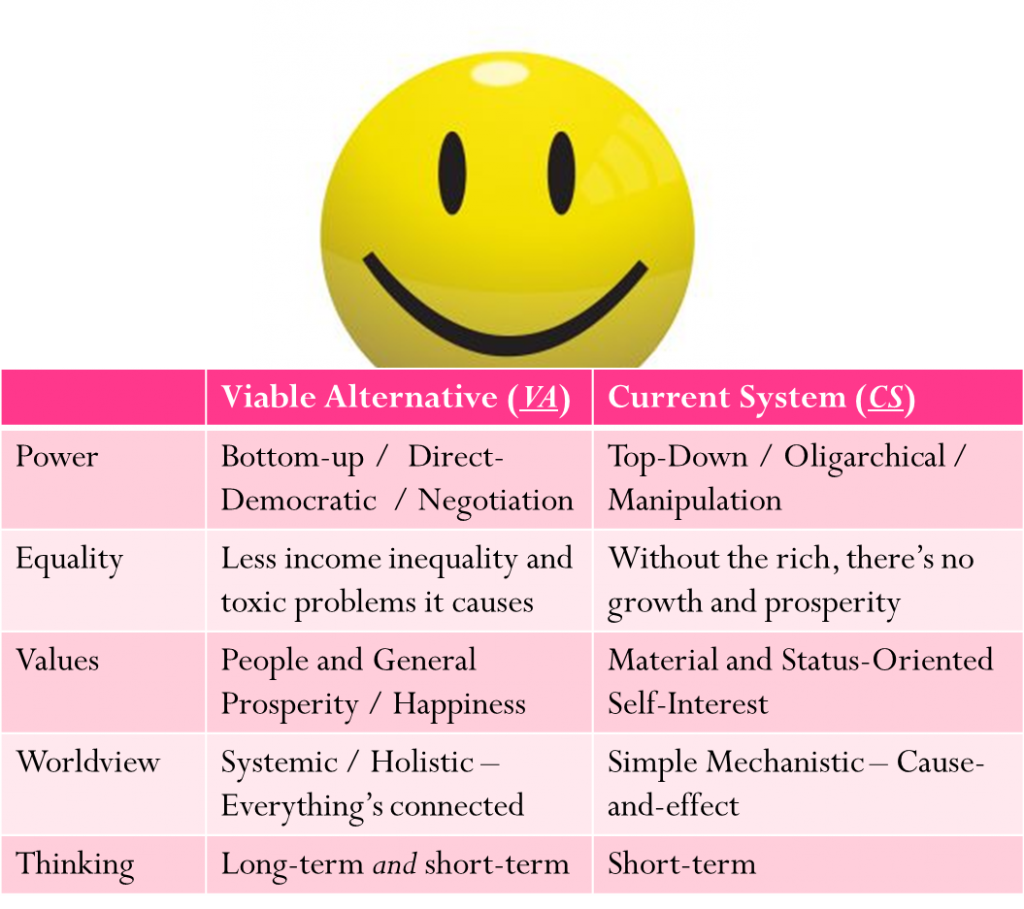
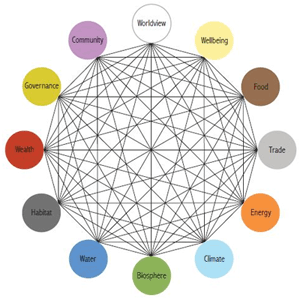


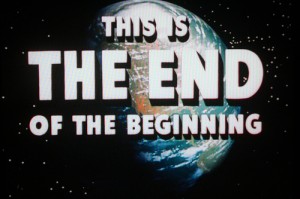
I did a lot of work on Occupy out of NYC. I had creds being a life-long NYer and LESer, so I was able to study a power struggle in this supposedly-leaderless group. Hardly democracy, my learning (which was all new to me) was that the movement is, as all movements, dialectic: communism.
Thank you for taking the time if you decide to look at my material:
http://occupy-critical-inquiry.blogspot.com